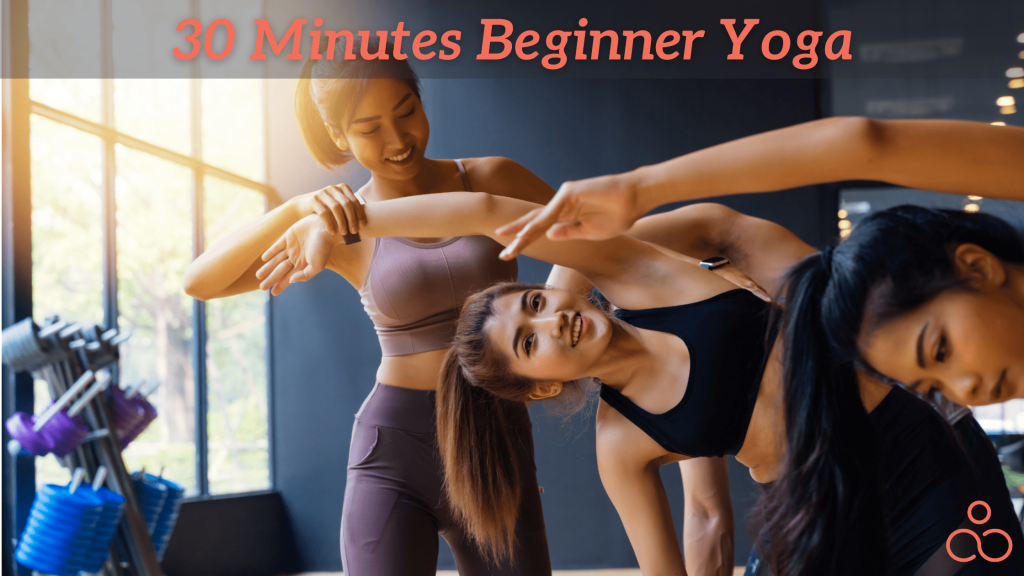Today’s world is fast-paced, and it is a real challenge to find time for everything we want to do regularly. We tend to compromise on essential things such as following a good diet, a healthy lifestyle, a fitness routine, and a pleasant sleep. So, here we are with a simple 30-minute beginner yoga routine that will help you stay healthy and fit. All you need is a dedicated 30-minutes every day with this yoga routine that works on a full-body workout. Let’s hit the yoga mat and begin with the sequence!
30-Minute Beginner Yoga Poses
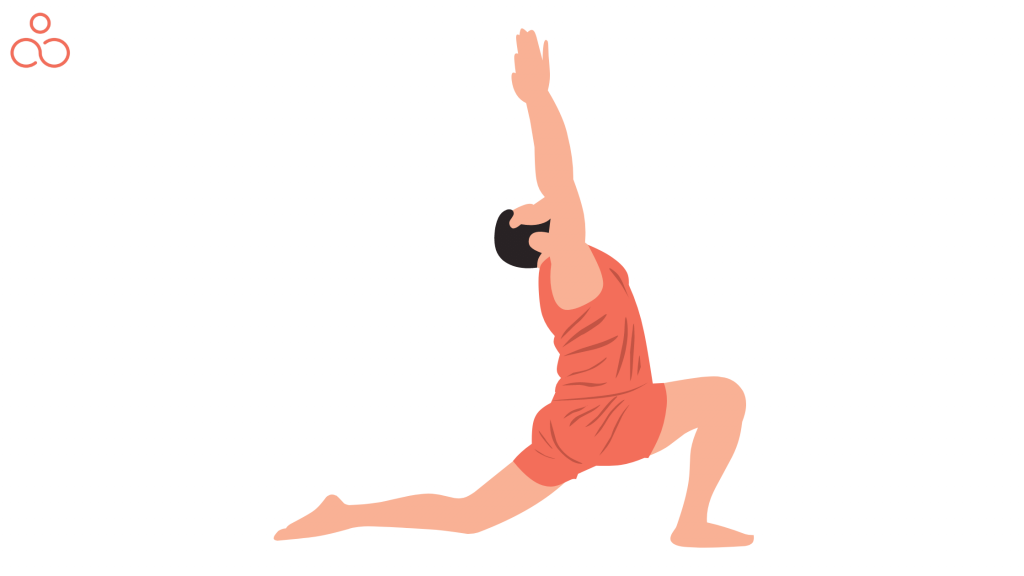
This introductory yoga session is ideal for newbies to yoga and also serves as a fantastic refresher for all levels of practitioners. You can practice with props and learn how to break down fundamental postures so you may leave feeling confident and at ease on your mat. This session is not as easy as a typical introductory yoga practice. It features common yoga positions and thoroughly explains the benefits, so you may feel secure in a studio setting every time you practice it. This yoga session is straightforward and designed to assist you in becoming more aware of your body.
- Child’s Pose or Balasana – The child’s pose is a natural pose that most are comfortable doing. It is similar to the posture of a fetus in the womb, making it soothing and relaxing. This asana helps in alleviating stress and reduces tension in the spinal muscles. It helps flex the internal organs, opens the shoulders, and improves blood circulation throughout the body. Hold the pose for a couple of minutes.
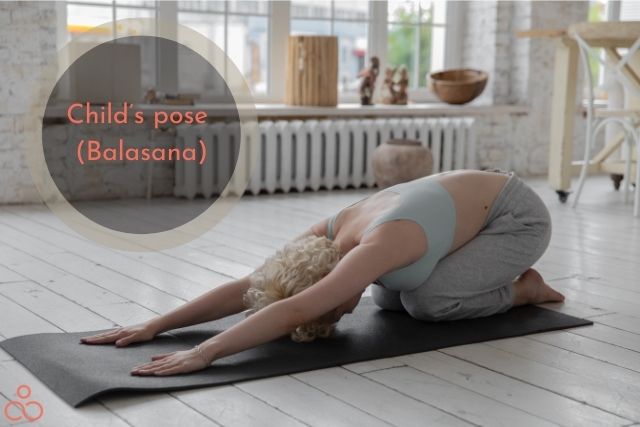
- Happy Baby Pose or Ananda Balasana – The happy baby pose reminds us of toddlers’ playful postures. It is yet another naturally occurring pose, and you might feel nostalgic while rolling in this pose from one side to another. This pose stretches the calf muscles, inner thighs, and hamstrings and strengthens the legs. It improves flexibility and releases tension in the spine. Repeat the pose 3 times before moving on to the next one.
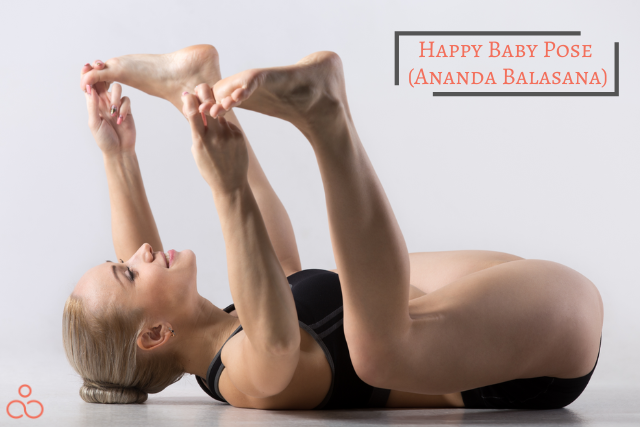
- Cat-Cow Stretch or Chakravakasana – The cat-cow stretch is done on all fours and is a great sequence for the spine. It stretches and strengthens the spine. It tones the back muscles and helps improve posture and balance. The chakravakasana also alleviates stress and calms the mind. It enhances the flexibility of the neck, shoulder, and back. Try to do as many stretches as you can in a minute.
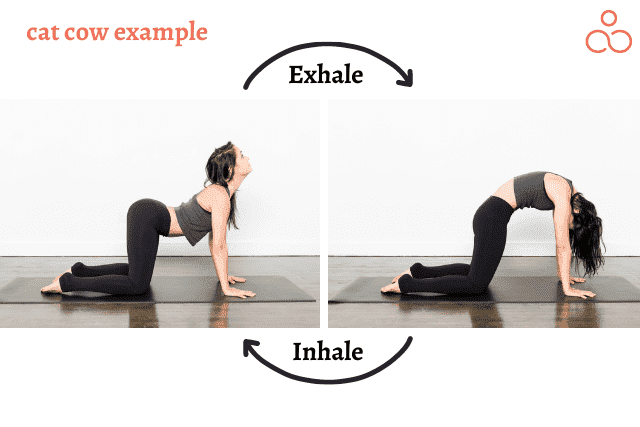
- Cobra Pose or Bhujangasana – The cobra pose is a reclining back-bending pose that helps open the chest. It strengthens the arms, stretches the spine, and tones the core muscles. The cobra pose also forms a part of the Sun Salutation Sequence. It can also help reduce chronic back pain. If you are trying to lose some fat on your tummy, this could be your best bet. You can hold the pose for 15 to 20 seconds and relax. Repeat more times once you get comfortable.
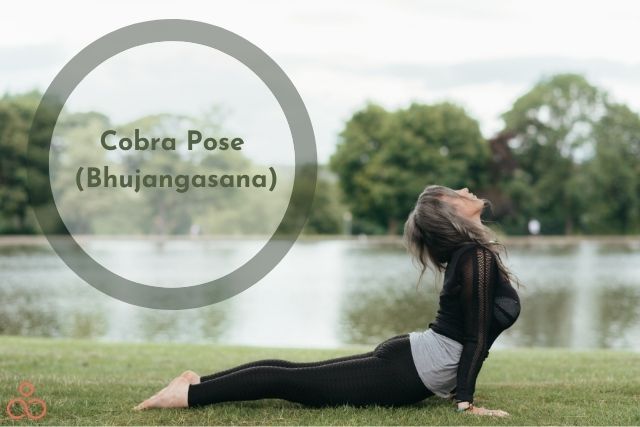
- Chair Pose or Utkatasana – The chair pose is a standing pose where you hold yourself in a low squat to strengthen your thighs, calf, ankles, and vertebral column. The shoulder and thorax stretch well in this pose. It will stabilize and strengthen the lower body while bringing flexibility and power to the arms and shoulder. Hold the pose for 30 seconds. Repeat if necessary.
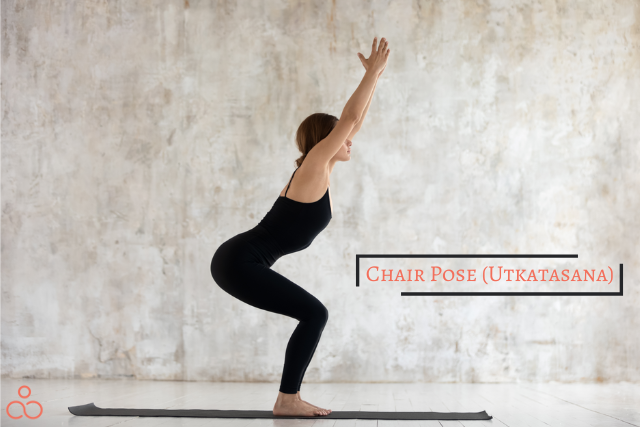
- Standing Forward Fold or Uttanasana – The standing forward fold stretches the entire body at the back and flexes the body at the front, including the chest, core, and abdominal muscles. It releases the tension in the back and alleviates stiffness. The pose enhances flexibility and mobility and improves posture. You can experience a calm and refreshed mind after the pose. You can hold the pose for up to 15 or 20 seconds. Challenge with a one-minute hold if you are comfortable.
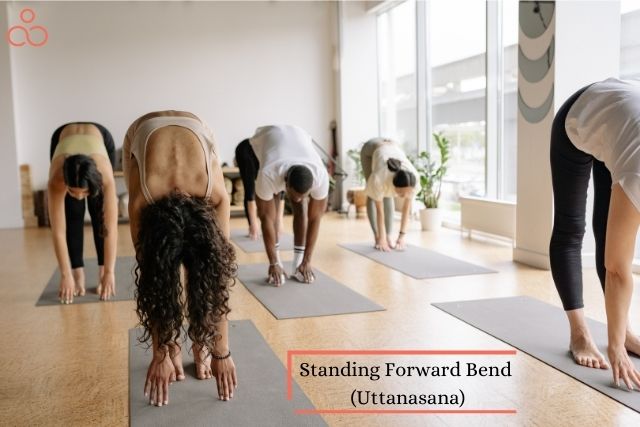
- Palm Tree Pose or Tadasana – The palm tree pose is a standing pose with a lateral upward spine stretch. This pose helps in maximum stretching of all the muscles in the body. It develops the respiratory muscles, improves spinal flexibility, tones the abdominal muscles, and enhances blood circulation. Try to hold the pose for 1 to 2 minutes.
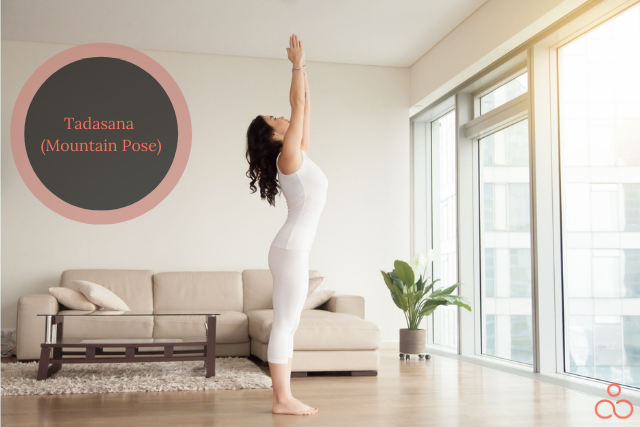
- Butterfly pose or baddha konasana – The butterfly pose is fun to do seated pose that relaxes the hip joints and loosens the lower back stiffness. It stretches the entire hip complex, including the hip flexors and lower back extensors. This pose is good for female reproductive health as well. Try to stay for a couple of minutes in this pose.
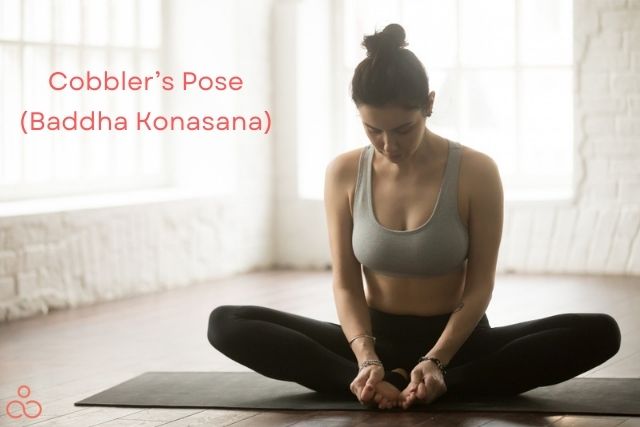
- Mountain Pose or Tadasana – The mountain pose is a basic standing pose. It is a must-do to perform all the other variations of standing poses at the intermediate and advanced levels of yoga. It strengthens the knees and improves the mobility of the legs. It enhances the spinal flexibility and tones the abdomen and hips. Hold the pose for 10 to 15 seconds and repeat it 8 to 10 times, summing it to a full 2-minutes, exclusively for this pose.
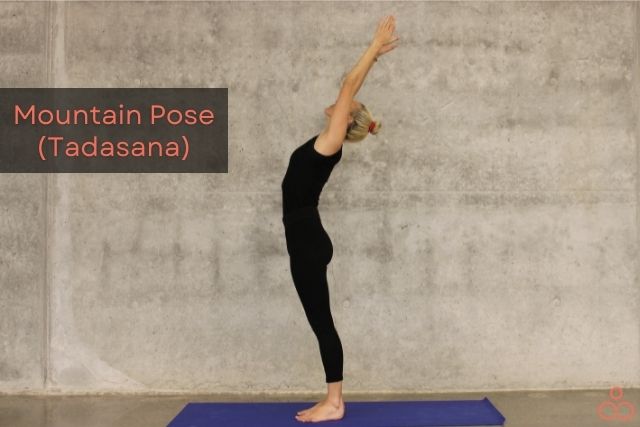
- Triangle Pose or Trikonasana – The triangle pose is a good standing pose for mental and physical equilibrium. While most asanas can be performed with closed eyes, the trikonasana requires the eyes to be kept open. It helps cure indigestion, stimulates kidneys, mobilizes hip joints, and eliminates fat from your waist and thighs. Hold the pose for 30 seconds on each side and repeat the sequence for a couple of minutes.
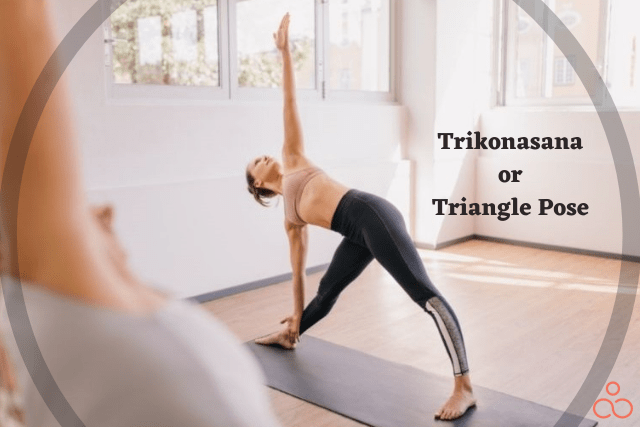
- Easy Pose or Sukhasana – The easy pose is considered the best for meditation. It is a comfortable seated posture and is easily doable by kids and adults alike. When you sit straight, you lengthen the spine and improve your body posture. When you sit for 5 minutes in this pose with your eyes closed, you can improve your mood and feel energetic. It is like a power nap that rejuvenates your body, but you aren’t going to sleep here. You will stay focused on a particular point. It opens the hip and massages the calf muscles.
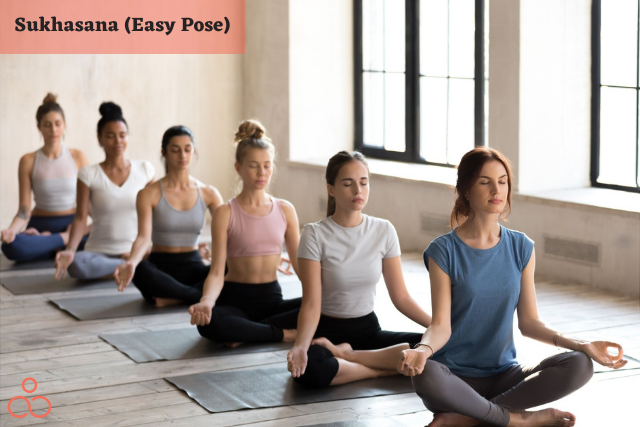
- Downward-Facing Dog Pose or Adho Mukha Svanasana – Downward-facing dog is an inversion pose that helps lengthen the spine, hamstrings, and calf muscles. It strengthens the chest, shoulders, arms, legs, and spine, making it a great pose for a full-body workout. It is believed to be a restorative pose that alleviates asthma, reduces headaches, and keeps insomnia at bay. Try to hold the pose for a couple of minutes.
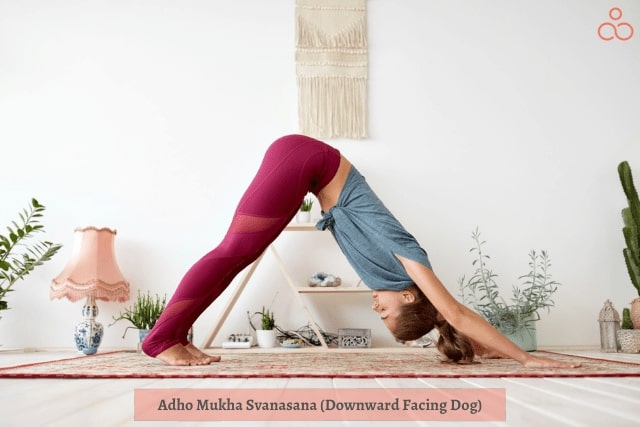
- Corpse Pose or Savasana – The corpse pose resembles a motionless and lifeless body and hence the name. Any yoga routine should be closed with the corpse pose as the last pose. It is a restorative pose that helps you relax and feel every inch of your body post-workout. It helps you to relax your muscles consciously. It alleviates stress, calms the mind, cures insomnia, and improves mental health. The corpse pose allows the benefits of all the poses to sink in deeply. Relax in this pose for 10 minutes before resuming your hectic life and work schedules.
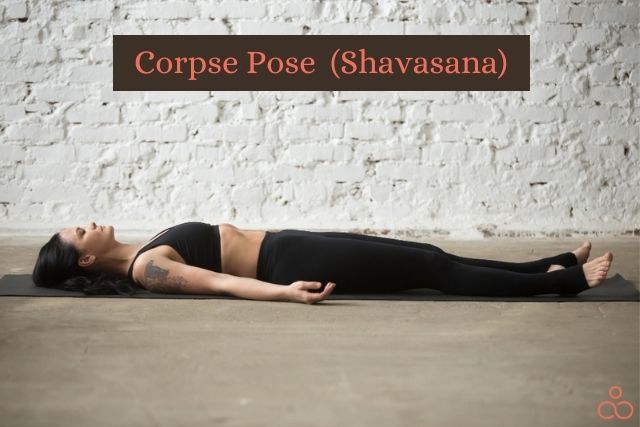
Practice Guidelines for Beginners
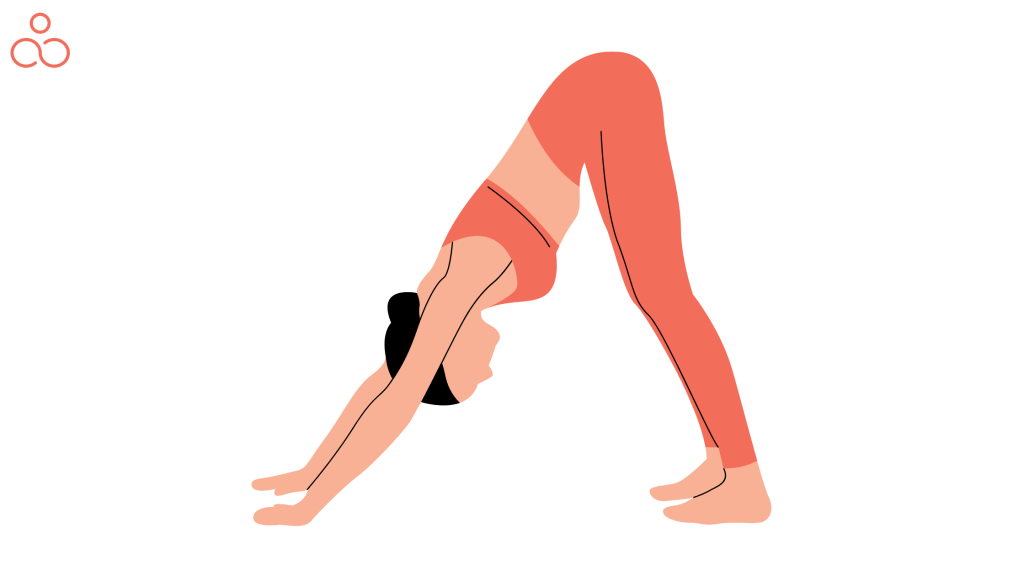
Yoga is not something that requires a considerable time commitment, but you must be consistent with whatever pattern you choose. While some people stick to yoga as a fitness mantra, some practice only for stretching or a relaxed workout when they avoid intense gym burnouts. If you are a beginner, you might find these quick tips helpful.
- If you plan for yoga sessions to complement your existing workout plans, then 1 or 2 hours a week is more than sufficient.
- For a beginner, three yoga sessions a week are a good start. It helps you stay focused and understand your body before hitting the daily practice.
- Improve your sleep cycles by practicing yoga Nidra for 10 to 15 minutes.
- Even a 10-minute daily practice can do wonders, and you will start noticing changes in your life.
- Ensure you stay hydrated throughout. Keep your stomach empty before a workout, or it might trigger nausea.
- Wear comfortable clothing and feel a relaxed state of mind. Do not wear something that might keep distracting you while practicing your poses.
- Focus on your breathing patterns at all times, that is the key to reaping the best benefits from any pose.
- Always listen to your body. Do not be in a rush to achieve the pose with perfection. It is not wrong to try out variations and modifications of each pose if you have pain or discomfort.
- Before starting with the practice, we recommend you consult your medical practitioner to ensure you are good to go! Sometimes, you might aggravate an existing pain without the proper knowledge about the pose. Try to hire a teacher and learn the poses under their guidance when you first begin.
FAQ’s
What is the effect of 30-minutes of beginner yoga routine?
A 30-minute yoga routine, as mentioned above, helps you to stretch and strengthen the entire body quickly without much of a compromise on your daily routines. It helps you bring significant changes to many of your unhealthy habits by changing them into healthy lifestyle-altering routines within a brief period.
When to practice yoga?
Yoga must be practiced either early in the morning or the evening. If you plan to practice yoga in the morning, ensure that your bowels are empty and your stomach clean. Suppose you plan to practice yoga in the evening, time your session after a gap of 4 to 6 hours from your last meal. Keep yourself hydrated and wear comfortable clothing.
How often should I practice 30-minute beginner yoga?
It is recommended to practice the 30-minute beginner yoga every day, preferably the first thing in the morning.
Is yoga a religion?
No, yoga is not a religion. It is similar to all the other ancient exercise forms and has scientific reasoning for all the poses. Each of the poses has a set of beneficial benefits at the physical and mental levels.
What should I do if I want to become a yogi?
It is a tricky question to answer in a few words. Yoga is a kind of discipline that we adapt to our lives. There is no definite period or course of action for you to follow. It is an ancient technique that helps improve mind-body awareness and is a great tool that you can adopt to have a peaceful life. It is a slow process and must not be rushed. All you need to do is believe in the system and be consistent with your practice.
Should I invest in a lot of yoga props as a beginner?
No, not necessary. To practice yoga with a little bit of comfort, you need the right yoga mat. It is not mandatory to buy all the other props and gear like yoga blocks, cushions, straps, etc. You can alternate them with a towel or belt readily available at home.
How to prepare for your beginners yoga class?
Yoga doesn’t require a complicated setup or preparation. The basic things that you must remember are:
- Wear form fitting clothes, so the instructor can help you with the alignment of certain poses. More baggy clothing will conceal mistakes more
- Don’t eat anything pungent, your pores might ooze the smell. Use a deodorant or take a shower, but smell nice!
- Stay Hydrated and if necessary keep a timer to track the number of seconds you are holding each pose
- Pick the right yoga mat and also feel free to add some supporting yoga gears like yoga cushions, blocks, or straps
- Choose a calm and ventilated place for your yoga practice to be able to focus on the poses.
Conclusion
Yoga is a slow process and has no shortcuts. It has immense benefits and brings a definite mind-body awareness that helps bring clarity, composure, and peace in life. The only important thing is consistency. Now that you know of a simple 30-minute yoga beginner workout, kick start your yogic journey!

